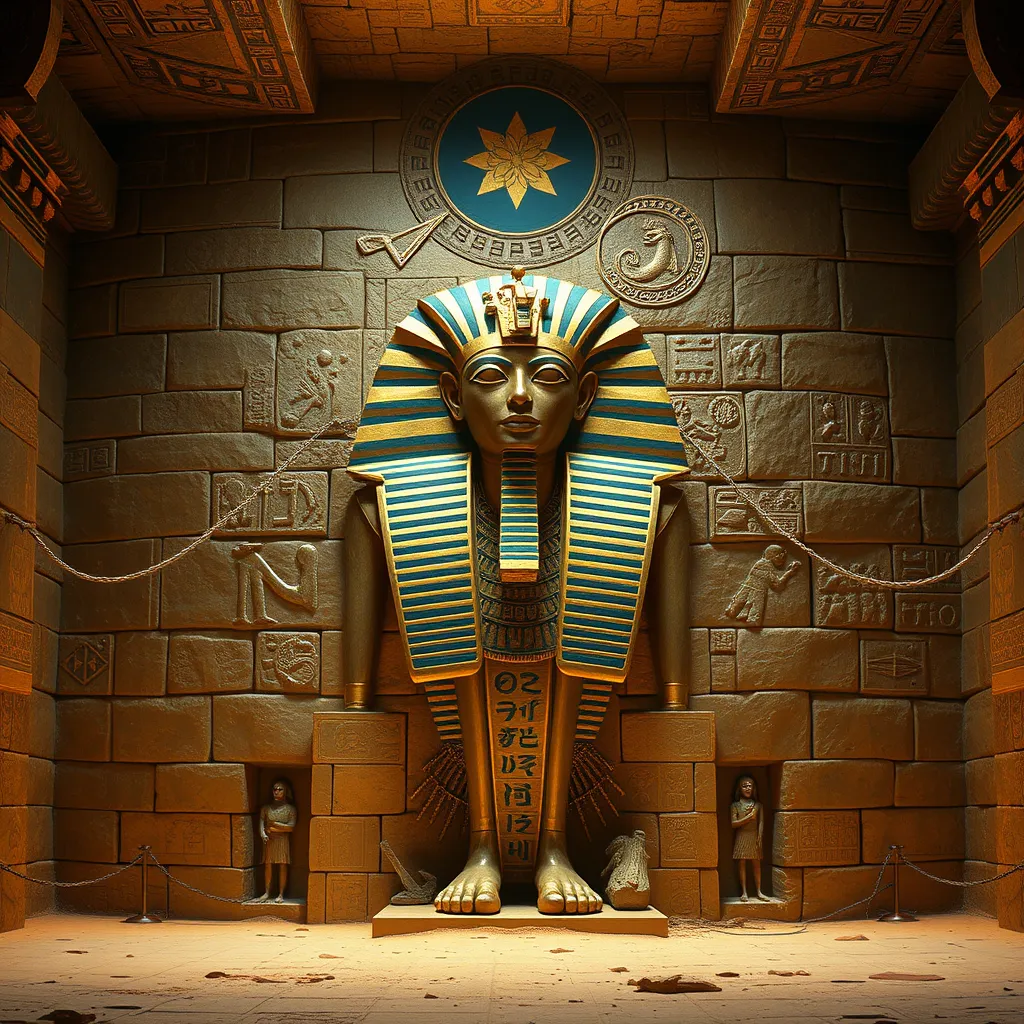The Book of the Dead: A Journey to the Heart of Ancient Egypt
I. Introduction to the Book of the Dead
The Book of the Dead, known in ancient Egyptian as “The Book of Coming Forth by Day,” is a collection of spells, prayers, and incantations designed to assist the deceased in navigating the challenges of the afterlife. This ancient text is of profound significance in Egyptian culture, as it encapsulates their beliefs about death, the afterlife, and the eternal journey of the soul.
Its primary purpose was to provide the deceased with the necessary tools and knowledge to successfully traverse the afterlife, ensuring a safe passage to the Field of Reeds, a paradise akin to the concept of heaven in other cultures.
II. Historical Context
A. Origins of the Book of the Dead in ancient Egyptian beliefs
The origins of the Book of the Dead can be traced back to ancient Egyptian beliefs surrounding death and the afterlife. These beliefs evolved over centuries, with roots in the prehistoric period when early Egyptians began to bury their dead with items they believed would be useful in the next life.
B. Evolution from the Pyramid Texts to the Coffin Texts and finally the Book of the Dead
The Book of the Dead is considered an evolution of earlier funerary texts. The Pyramid Texts, which date back to the Old Kingdom (c. 2686–2181 BCE), were among the first written spells intended to protect the pharaohs in the afterlife. These texts were inscribed on the walls of royal tombs.
During the Middle Kingdom (c. 2055–1650 BCE), the Coffin Texts emerged, expanding the spells to include non-royal individuals and providing a greater variety of funerary rituals. Finally, by the New Kingdom (c. 1550–1070 BCE), the Book of the Dead was compiled, becoming accessible to a broader audience.
III. Structure and Content
A. Overview of the layout and organization of the text
The Book of the Dead is not a single work but rather a collection of spells, often customized for individual tombs. The text is typically organized into chapters, each containing different spells that serve various purposes, such as protection, guidance, or resurrection.
B. Key spells and their meanings for the deceased
Some of the most notable spells include:
- Spell 125: The Judgment of the Dead, where the heart of the deceased is weighed against the feather of Ma’at, symbolizing truth and justice.
- Spell 30: A spell for opening the mouth, intended to allow the deceased to speak and breathe in the afterlife.
- Spell 151: The spell for entering the Field of Reeds, describing the idyllic afterlife that awaits the worthy souls.
IV. The Afterlife According to Ancient Egyptians
A. Concept of the afterlife and its importance in everyday life
For the ancient Egyptians, the afterlife was a continuation of life on earth, and this belief permeated their daily lives. They prepared for death throughout their lives, ensuring they lived morally and performed rituals to honor the gods.
B. Description of the journey through the Duat (the underworld)
The journey through the Duat, the Egyptian underworld, was fraught with challenges. The deceased had to navigate various obstacles, including demons and treacherous landscapes. The Book of the Dead provided guidance and spells to help the deceased overcome these trials and emerge victorious.
V. Iconography and Art in the Book of the Dead
A. Role of illustrations and imagery in the text
Illustrations and imagery played a critical role in the Book of the Dead. The visual components complemented the text, offering additional layers of meaning and guidance for the deceased. Artistic depictions often included scenes of the afterlife, divine beings, and protective symbols.
B. Analysis of common symbols and their significance
Some common symbols found in the Book of the Dead include:
- Ankh: Symbol of life.
- Scarabs: Representing resurrection and transformation.
- Feathers of Ma’at: Symbolizing truth and justice.
VI. The Book of the Dead in Modern Scholarship
A. Discoveries and translations of the text over the years
Modern scholarship has greatly expanded our understanding of the Book of the Dead. Since its initial discovery, numerous translations and interpretations have emerged, revealing the complexity and richness of ancient Egyptian thought.
B. Impact on our understanding of ancient Egyptian religion and culture
The Book of the Dead has provided invaluable insights into ancient Egyptian religion, beliefs, and cultural practices. It has helped scholars piece together the spiritual landscape of a civilization that thrived for millennia.
VII. Influence on Popular Culture
A. Representation of the Book of the Dead in literature and film
The Book of the Dead has inspired various forms of popular culture, from literature to film. It is often referenced in stories that explore themes of death, resurrection, and the supernatural.
B. Modern interpretations and adaptations of ancient Egyptian mythology
Modern adaptations often draw on the mystical elements of the Book of the Dead, reinterpreting its themes for contemporary audiences. Films such as “The Mummy” and novels like “The Egyptian” showcase the allure of ancient Egyptian mythology and the enduring fascination with the afterlife.
VIII. Conclusion
The Book of the Dead remains one of the most significant texts from ancient Egypt, illuminating the civilization’s beliefs about death and the afterlife. Its intricate spells and rich iconography offer a glimpse into the spiritual life of the Egyptians, revealing their profound respect for the journey beyond death.
This ancient text continues to captivate scholars and enthusiasts alike, serving as a reminder of the enduring legacy of ancient Egyptian culture and its complex understanding of mortality and existence. As we explore the Book of the Dead, we not only uncover the beliefs of a bygone era but also reflect on our own views of life, death, and what may lie beyond.




